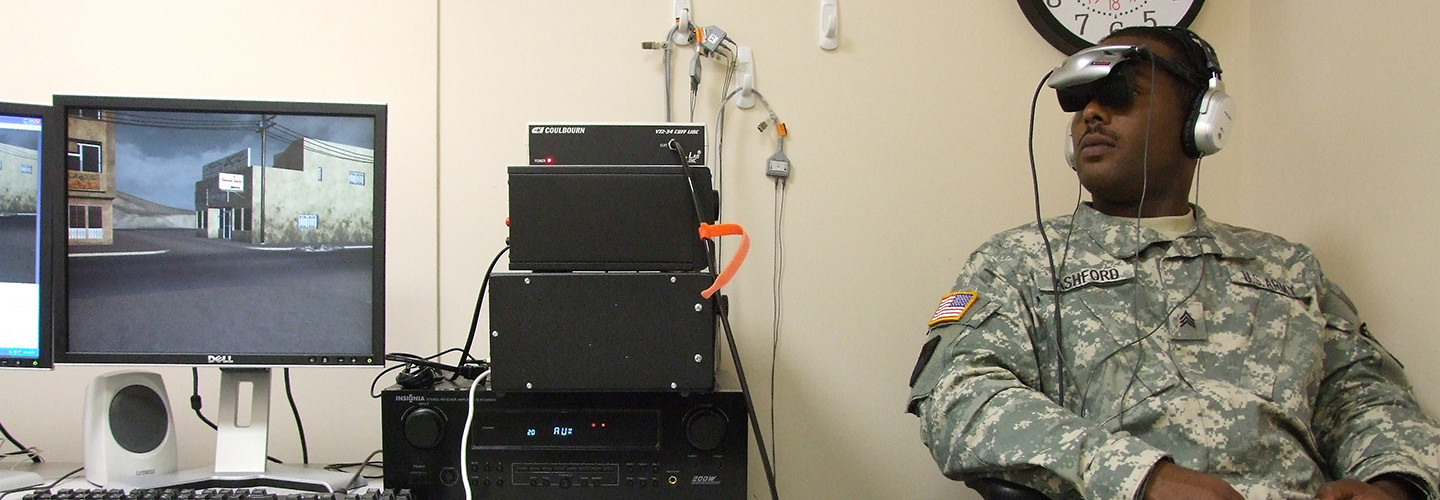VR Can Enhance Military Training and Treat Trauma
Virtual reality technology entered the public eye in the early 1990s, when VR goggles were integrated into arcade machines, allowing users to immerse themselves in stereoscopic 3D visuals and connect to one another in multiplayer games. Years later, the technology was popularized via consumer gaming headsets, which gamers could use to create the same immersive experiences on their home consoles.
Little did we know these were the humble beginnings of what is now a multibillion-dollar market, one that has not just changed how we play, but also how we work.
Today, VR has expanded beyond its gaming origins and is no longer just a niche, recreational technology. VR is a technological innovation driven by strong market insights and financial impact, and has tremendous potential to disrupt some of the most unexpected industries. Goldman Sachs reports commercial spending for virtual reality will overtake consumer spending by 2020 and grow to a projected $80 billion market (combined with augmented reality) by 2025.
The rapid development of technology is also spurring its adoption and commercialization in the business and industrial sectors. Higher visual fidelity helmet-mounted displays and better integrated solutions — along with an increasing comfort level among users — are accelerating the adoption of VR in innovative ways for unexpected industries. The possibilities are endless and attractive to the future world at work, with a forecast of 171 million active virtual reality users by the end of this year.
VR has significant potential in the U.S. military. It can provide virtual training for soldiers and support crews. It can give soldiers more information on the battlefield. And it can help heal trauma when soldiers return home.
MORE FROM FEDTECH: Find out how VR and AR can improve agencies' productivity.
How VR Can Aid the Armed Forces
In the military, proper training can be the difference between life and death.
Yet, training soldiers to be prepared for combat or other dangerous situations can be a Catch-22. How can military leaders provide authentic training in a way that prepares their personnel without endangering them?
Virtual reality offers a solution. VR delivers training beyond theory in a controlled yet realistic environment, allowing militaries to make it more efficient, safe and cost-effective. For instance, designers can create complex simulations to illustrate how defense and aerospace technologies would be deployed.
This could be anything from rehearsals of routine missions to visualizing what an F-16 would look like in flight. Flight simulations provide safe environments to help pilots in training to remain calm under stress, enable personnel to gauge more realistic reactions and ensure higher retention of information. Perhaps for these reasons, by 2025, VR projects in the U.S. military are expected to generate $1.4 billion in revenue.
Meanwhile, the Navy is exploring the use of VR for training for aircraft carrier flight deck operations. And the U.S. Special Operations Command has expressed interest in "improvements and enhancements to visual augmentation systems (VAS) and related auxiliary technologies.” This includes augmented reality and virtual reality solutions for “heads-up” displays, as well as the fusion of disparate data sources into a common visual display.
Another fascinating area where VR is being deployed is in the treatment of veterans with post-traumatic stress disorder (PTSD). In 1997, researchers linked exposure therapy (reliving the trauma in a controlled environment repeatedly, until the triggers no longer produce anxiety) to the capabilities of VR.
Today, the same therapy concepts are being used to improve the physical, mental, emotional and psychological health of members of this underserved community. This involves immersing users into simulations and exposing them to stimuli and situations which contributed to their PTSD — riding in a tank, walking around their former base camps — which allows them confront and manage their trauma.
This is the concept behind projects like the University of Southern California’s “Bravemind,” which has shown that VR-based treatment was successful for veterans who were previously unresponsive to other treatment types.
It seems clear that there is significant potential for VR technology to deliver benefits to the armed forces, and it is only a matter of time before they start to materialize in real life.








